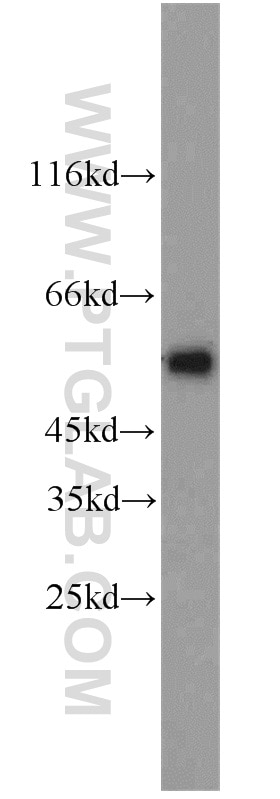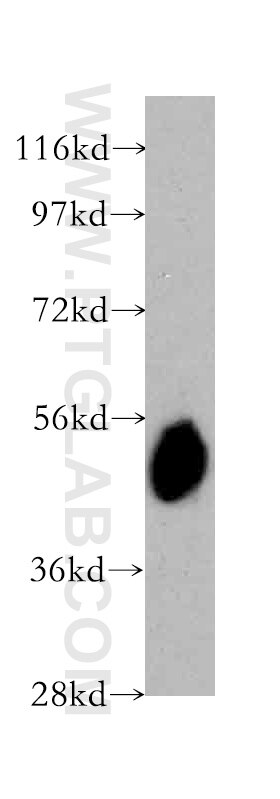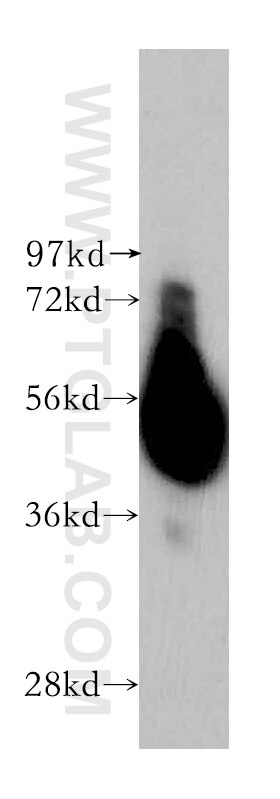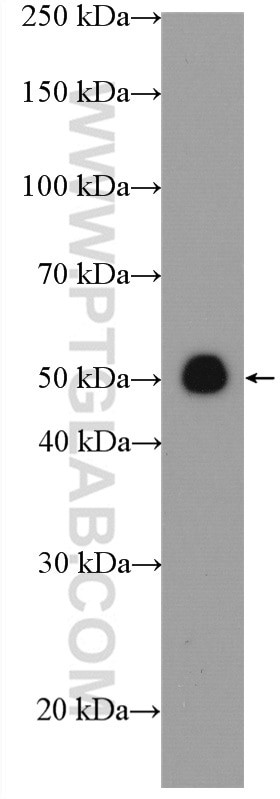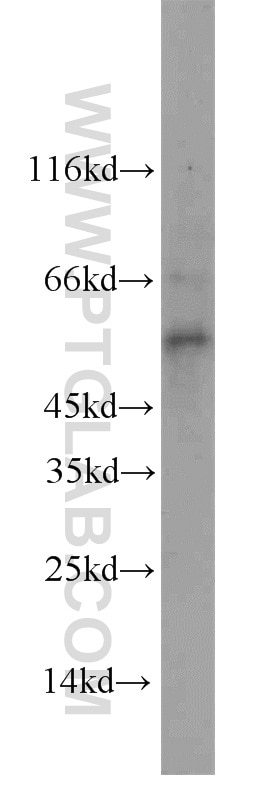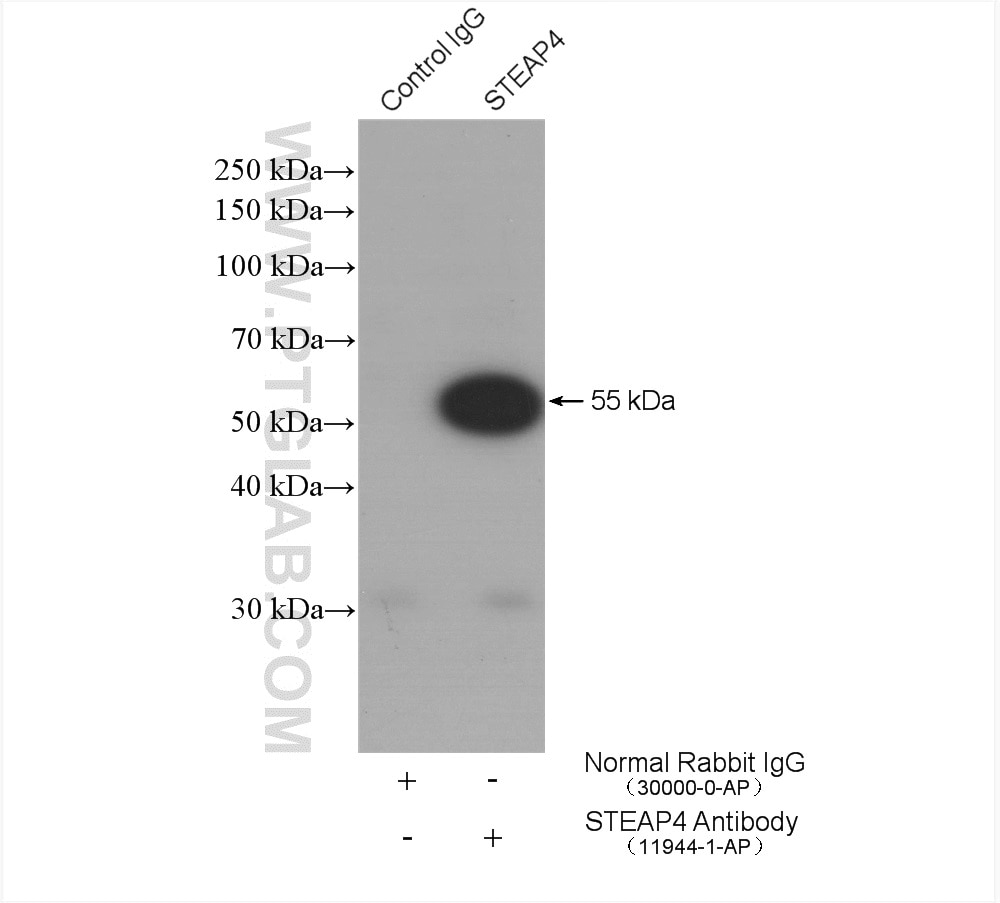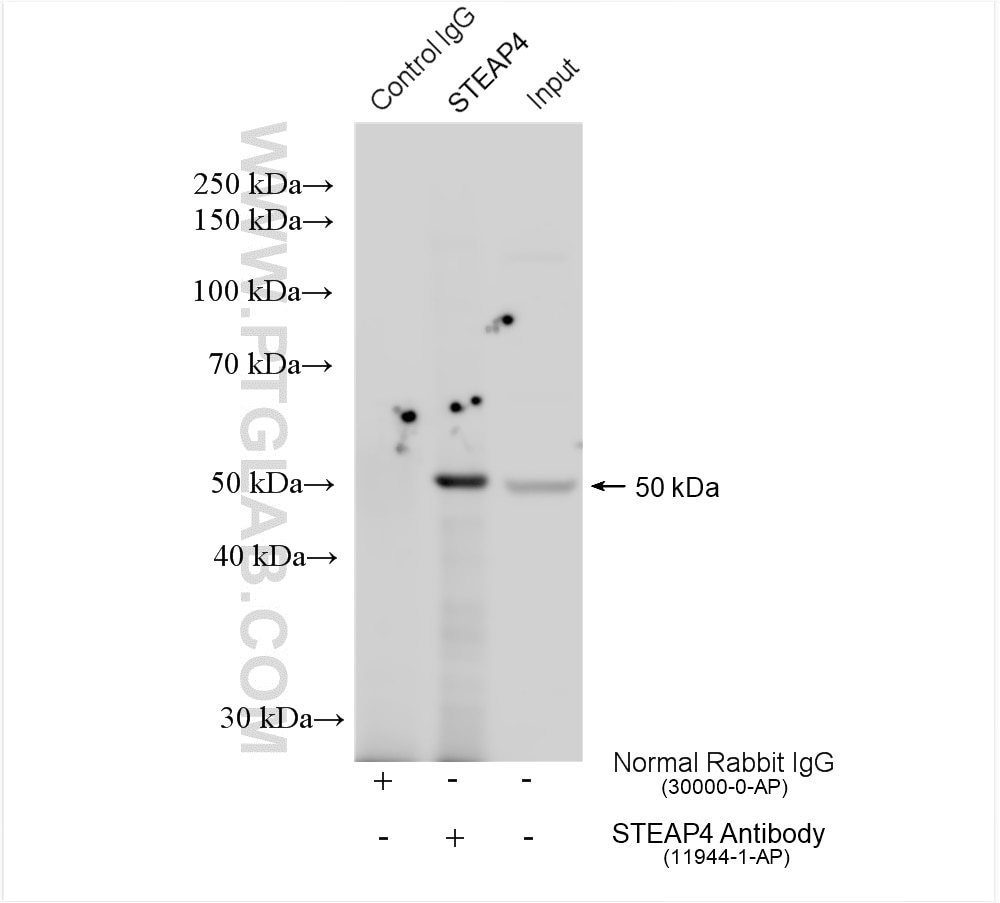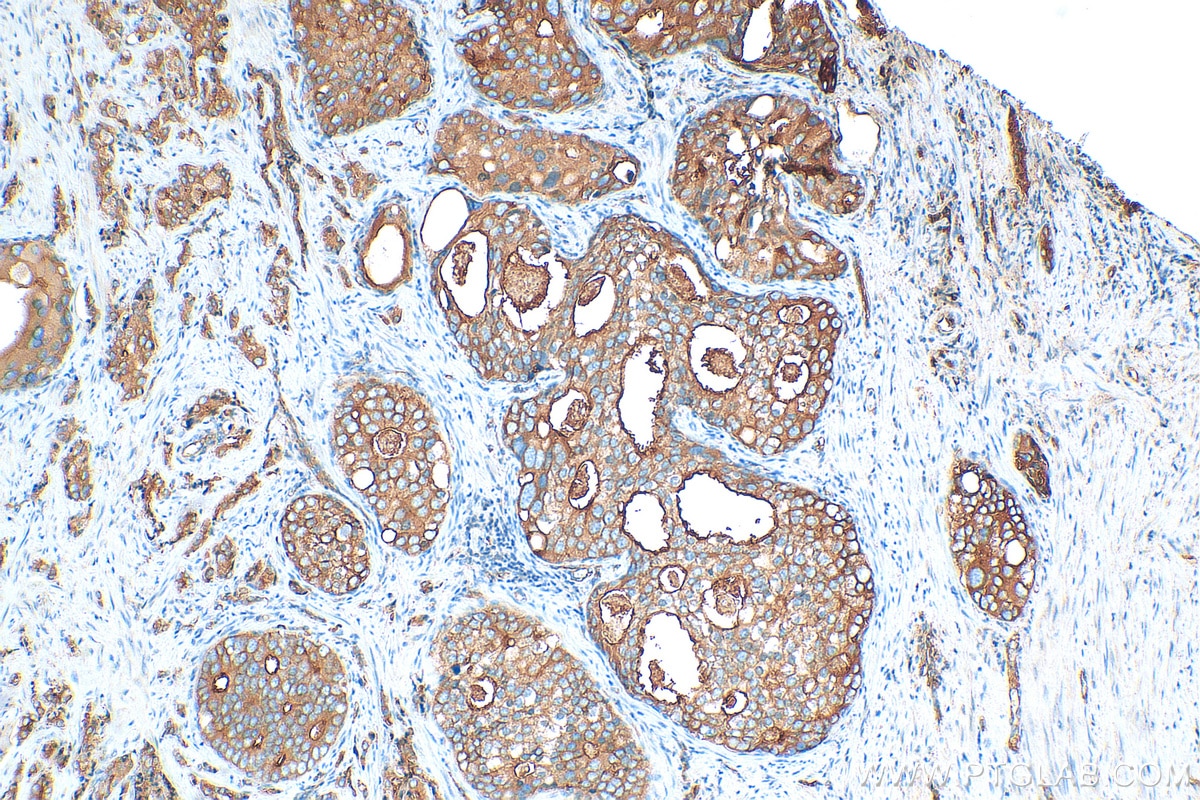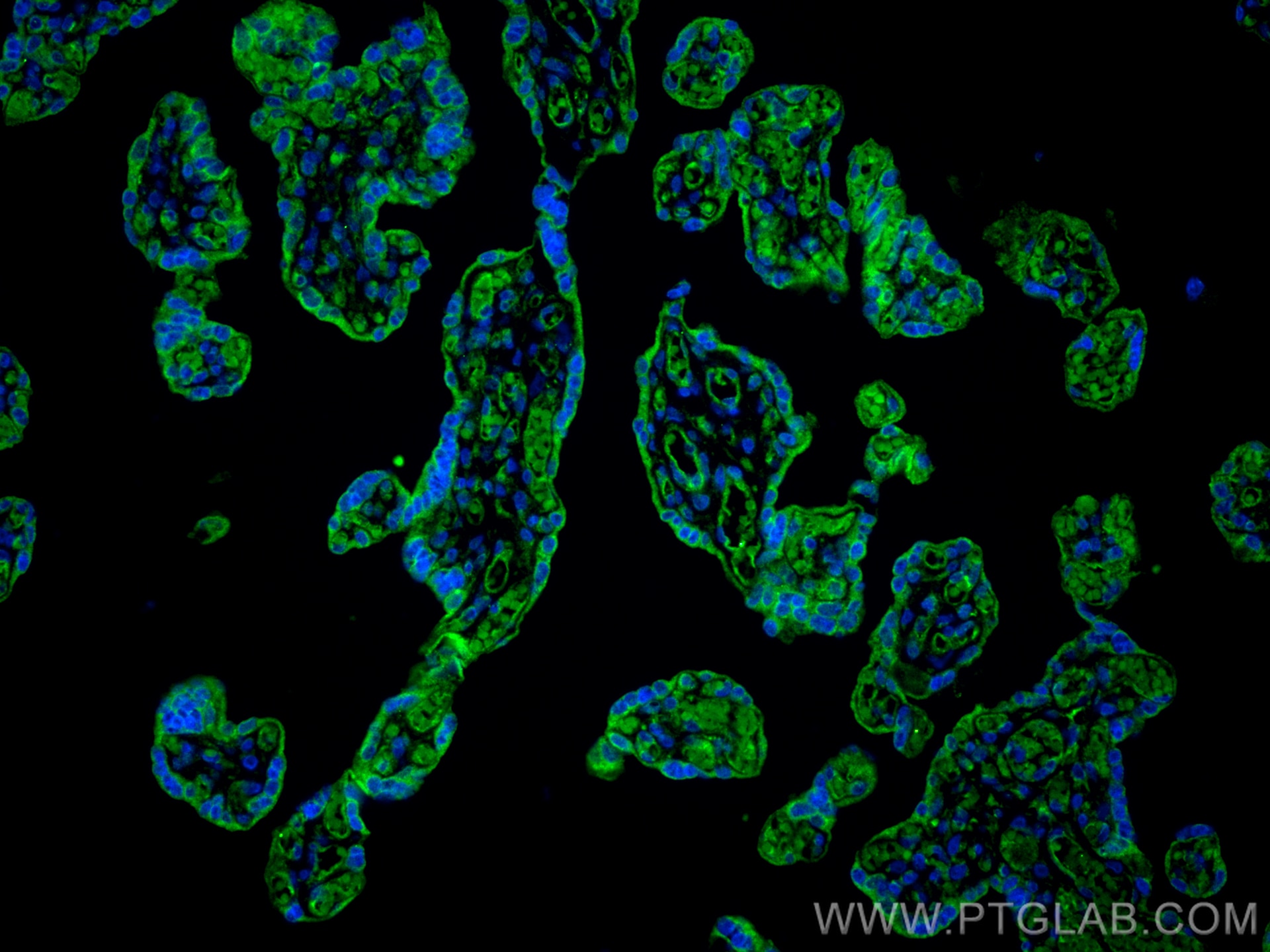- Featured Product
- KD/KO Validated
STEAP4 Polyklonaler Antikörper
STEAP4 Polyklonal Antikörper für WB, IHC, IF-P, IP, ELISA
Wirt / Isotyp
Kaninchen / IgG
Getestete Reaktivität
human, Maus, Ratte
Anwendung
WB, IHC, IF-P, IP, CoIP, ELISA
Konjugation
Unkonjugiert
Kat-Nr. : 11944-1-AP
Synonyme
Geprüfte Anwendungen
| Erfolgreiche Detektion in WB | A549-Zellen, 3T3-L1-Zellen, humanes Hirngewebe, humanes Lebergewebe, Rattenlebergewebe, RAW 264.7-Zellen |
| Erfolgreiche IP | 3T3-L1-Zellen |
| Erfolgreiche Detektion in IHC | humanes Prostatakarzinomgewebe Hinweis: Antigendemaskierung mit TE-Puffer pH 9,0 empfohlen. (*) Wahlweise kann die Antigendemaskierung auch mit Citratpuffer pH 6,0 erfolgen. |
| Erfolgreiche Detektion in IF-P | humanes Plazenta-Gewebe |
Empfohlene Verdünnung
| Anwendung | Verdünnung |
|---|---|
| Western Blot (WB) | WB : 1:500-1:1000 |
| Immunpräzipitation (IP) | IP : 0.5-4.0 ug for 1.0-3.0 mg of total protein lysate |
| Immunhistochemie (IHC) | IHC : 1:50-1:500 |
| Immunfluoreszenz (IF)-P | IF-P : 1:200-1:800 |
| It is recommended that this reagent should be titrated in each testing system to obtain optimal results. | |
| Sample-dependent, check data in validation data gallery | |
Veröffentlichte Anwendungen
| KD/KO | See 11 publications below |
| WB | See 33 publications below |
| IHC | See 22 publications below |
| IF | See 3 publications below |
| IP | See 1 publications below |
| CoIP | See 1 publications below |
Produktinformation
11944-1-AP bindet in WB, IHC, IF-P, IP, CoIP, ELISA STEAP4 und zeigt Reaktivität mit human, Maus, Ratten
| Getestete Reaktivität | human, Maus, Ratte |
| In Publikationen genannte Reaktivität | human, Maus, Ratte |
| Wirt / Isotyp | Kaninchen / IgG |
| Klonalität | Polyklonal |
| Typ | Antikörper |
| Immunogen | STEAP4 fusion protein Ag2545 |
| Vollständiger Name | STEAP family member 4 |
| Berechnetes Molekulargewicht | 52 kDa |
| Beobachtetes Molekulargewicht | 52 kDa |
| GenBank-Zugangsnummer | BC020600 |
| Gene symbol | STEAP4 |
| Gene ID (NCBI) | 79689 |
| Konjugation | Unkonjugiert |
| Form | Liquid |
| Reinigungsmethode | Antigen-Affinitätsreinigung |
| Lagerungspuffer | PBS with 0.02% sodium azide and 50% glycerol |
| Lagerungsbedingungen | Bei -20°C lagern. Nach dem Versand ein Jahr lang stabil Aliquotieren ist bei -20oC Lagerung nicht notwendig. 20ul Größen enthalten 0,1% BSA. |
Hintergrundinformationen
STEAP4 (also called STAMP2), is a member of the STEAP family. Structurally, It is a 459 amino acid protein characterized by a molecular topology of six transmembrane domains. The cytoplasmic N-terminal domain of STEAP4 shows structural similarity with bacterial and archaeal FNO oxidoreductase and STEAP4 exhibits a strong iron reductase activity. Studies in mice and human suggest that STEAP4 maybe involved in adipocyte development and metabolism, and may contribute to the normal biology of the prostate cell, as well as prostate cancer progression.
Protokolle
| PRODUKTSPEZIFISCHE PROTOKOLLE | |
|---|---|
| WB protocol for STEAP4 antibody 11944-1-AP | Protokoll herunterladen |
| IHC protocol for STEAP4 antibody 11944-1-AP | Protokoll herunterladenl |
| IF protocol for STEAP4 antibody 11944-1-AP | Protokoll herunterladen |
| IP protocol for STEAP4 antibody 11944-1-AP | Protokoll herunterladen |
| STANDARD-PROTOKOLLE | |
|---|---|
| Klicken Sie hier, um unsere Standardprotokolle anzuzeigen |
Publikationen
| Species | Application | Title |
|---|---|---|
J Allergy Clin Immunol Six-transmembrane epithelial antigens of the prostate comprise a novel inflammatory nexus in patients with pustular skin disorders. | ||
Bone Res Dietary fat-associated osteoarthritic chondrocytes gain resistance to lipotoxicity through PKCK2/STAMP2/FSP27.
| ||
Basic Res Cardiol The six-transmembrane protein Stamp2 ameliorates pulmonary vascular remodeling and pulmonary hypertension in mice.
| ||
Nat Commun Inflammation mobilizes copper metabolism to promote colon tumorigenesis via an IL-17-STEAP4-XIAP axis. | ||
Proc Natl Acad Sci U S A Quantitative proteomics identifies STEAP4 as a critical regulator of mitochondrial dysfunction linking inflammation and colon cancer. | ||
Rezensionen
The reviews below have been submitted by verified Proteintech customers who received an incentive for providing their feedback.
FH Xiang (Verified Customer) (11-08-2019) | Works pretty good.
|

